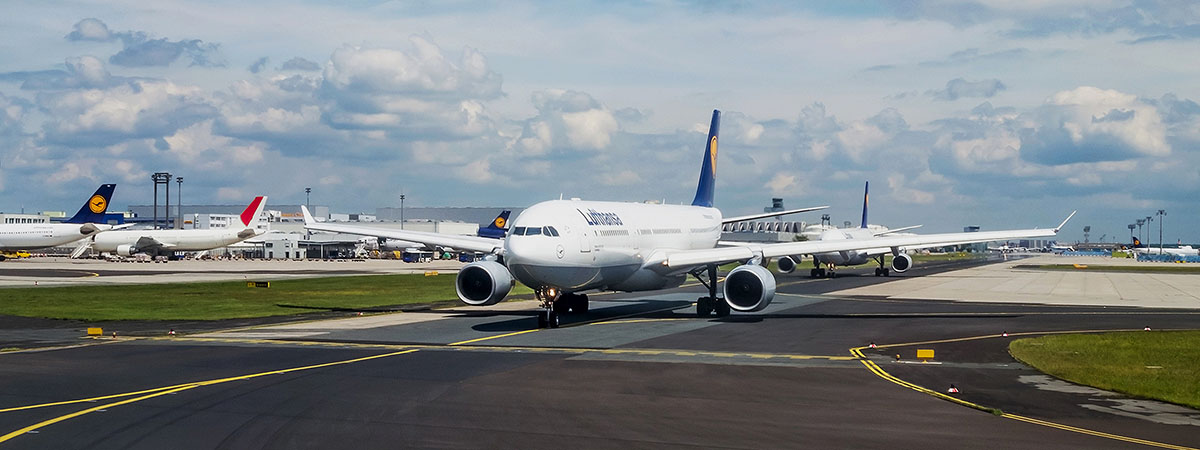In order to be able to define an operational Safety Management System (SMS), we first have to know exactly what operational safety is.
In the field of aviation, the concept of operational safety can be defined as “the state in which the possibility of causing injury or damage to people, infrastructure, equipment or aircraft is reduced and maintained at or below an acceptable level, by means of a continuous process of hazard identification and risk management.”
The amount of technical and human resources involved in maintaining the operational safety of an airport is huge, but they are essential in any airport activity.
Based on this definition, it could be said that an SMS is a systematic approach to operational safety management, which includes all necessary organisational structure, lines of responsibility, policies and procedures.
But where does the SMS concept come from? The highest level of applicable regulations that mention SMSs are outlined by the ICAO (Annex 14 Aerodromes, Annex 19 Safety Management, Doc 9774 Manual on Certification of Aerodromes and Doc 9859 Safety Management Manual). These are then subsequently adapted to each country’s regulations. In the case of Spain, this includes Royal Decree 862/2009 for verified airports and EU Regulation 139/2014 for certified airports. Likewise, AESA (the Spanish Aviation Safety and Security Agency) has a General Technical Instruction for drawing up Safety Management Systems.
Safety management requires the integration of reactive, proactive and predictive safety data capture systems, a judicious combination of reactive, proactive and predictive mitigation strategies and the development of reactive, proactive and predictive mitigation methods.
To this end, every airport has produced a manual for its implemented SMS. This manual is specific to each aerodrome and covers all processes that make up operational safety management. The manual details the procedures and modules of each SMS and defines the organisational structure, as well as the responsibilities of each figure. The person in charge of its maintenance is the Safety Manager (SM). It also defines the different committees that focus on operational safety, along with their members and meeting frequency. It also includes coordination with the self-protection plan and its corresponding committees.
SMS procedures or modules:
–SMP-01 Risk management: There are several dangers that could compromise safety in an airport’s everyday operation. It is therefore important to have identified these hazards and their associated risks.
Once the risks have been identified, the implications for operational safety are analysed. Depending on the result of this analysis, the measures to be implemented to eliminate or mitigate these risks are studied, and the people responsible for them are identified. Once they have been implemented, their effectiveness is monitored.
-SMP-02 External suppliers: A specific safety procedure for external services and supplies that establishes the responsibilities, functions and method to be followed in order to control all aspects of external suppliers that may affect operational safety.
Achieving airport operational safety objectives depends on all persons who may affect operations in the manoeuvring area, which can include airport operator personnel and external supplier personnel.
SMP-03 Operational safety indicators: Indicators are a tool to assess the level of operational safety of the airport activities they are associated with, compared to an agreed reference. Indicators are useful for measuring historical evolution; for comparisons with other periods, places or situations; in order to have alarms that can alert to some anomaly; and in order to have more control over the attainment of objectives.
For example, indicators could include: LVP activations, training, infractions of the Apron Safety Regulations, FOD on the runway, runway incursions, etc.
-SMP-04 Handling of accidents/incidents: This procedure defines how to communicate, collect and process data regarding airport incidents that occur on the airport’s airside, or that affect operational safety. This data is then used to evaluate the level of operational safety with which activities in the manoeuvring area are carried out; identify the causes and factors that contribute to airport incidents; determine the risks derived from the airport’s procedures, equipment and environment; determine actions and measures to avoid the recurrence of airport incidents; analyse the effectiveness of operational safety measures in the manoeuvring area; and analyse the operational repercussions of incidents.
-SMP-05 Documentation management: The purpose of this procedure is to describe the routines established at the airport for the drafting, review, approval, distribution, control and dissemination of SMS documentation. This ensures the identification, traceability, transparency and processing of documentation, in order to provide documentary evidence of operational safety management to any interested party, where appropriate.
-SMP-06 Internal monitoring: Monitoring is a proactive tool for operational safety that allows potential problems to be detected before they have an impact on airport safety. This is not applicable to AESA monitoring.
-SMP-07 Training: This procedure describes the SMS-related courses that should be taken by personnel.
-SMP-08 Communications: Communications are the means to develop, promote and communicate the culture of operational safety among all airport employees. In order to manage hazards, it is essential to identify those hazards. They therefore should be communicated in order to prevent accidents/incidents. It is important to encourage personnel collaboration and provide the necessary communication channels. This applies to all personnel (both internal and external).
-SMP-09 Operational safety programme: One of the fundamental premises of SMSs is the continuous improvement of the operational safety levels achieved at airports. To this end, operational safety objectives are set each year, and these are included in the airport’s operational safety programme.
In conclusion, therefore, the number of people involved in maintaining operational safety is huge, and only with the help of an SMS and the continuous collaboration and involvement of all those affected can we achieve the highest standards of operational safety, as well as its continuous improvement.



